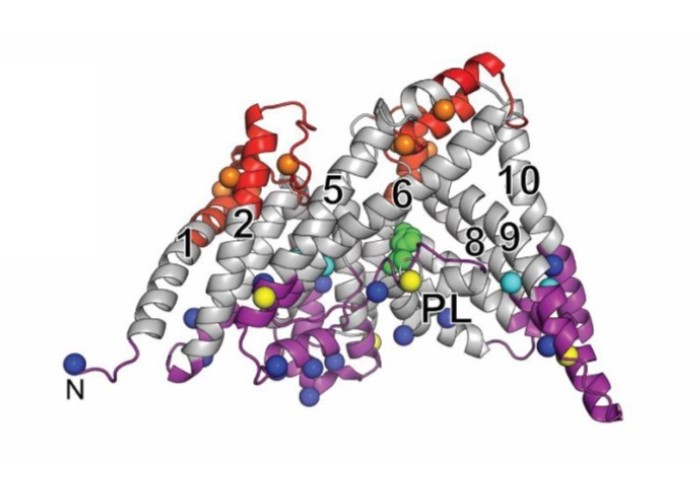Identification of a small-molecule inhibitor binding site in HHAT

Congratulations to group members who had their work published in Angewandte Chemie International Edition!
The publication ‘Photochemical probe identification of a small-molecule inhibitor binding site in Hedgehog acyltransferase (HHAT)’ was the result of a large collaborative effort and was authored by former group member Tom Lanyon-Hogg, who now leads his own lab at the University of Oxford, and involved contributions from several of our past MRes in Drug Discovery and Development students: Leran Zhang, Balazs Pogranyi and Callum Johnston along with post-doctoral research associates Markus Ritzefeld, Milon Mondal and Sebastian Andrei and MSci student Joshua Newington. The work was carried out in collaboration with Division of Structural Biology Wellcome Centre for Human Genetics at the University of Oxford and Imperial’s Professor Tony Magee (National Heart and Lung Institute) and Professor Matt Fuchter (Department of Chemistry).
The paper details development of a photochemical probe and its use to learn more about a novel small-molecule inhibitor binding site in a human mammalian membrane-bound O-acyltransferase (MBOAT) - Hedgehog acyltransferase (HHAT). MBOATs are an important family of proteins involved in many biological processes including growth, development and appetite sensing and HHAT has been studied by the Tate group for many years as an attractive drug target in both cancer and obesity. Until recently little was known about the binding site of HHAT and the molecular mechanisms underlying it’s inhibition by small molecules.
This study investigated the structure-activity relationship (SAR) of a known series of HHAT inhibitors and led to the identification of the most potent HHAT inhibitor ever reported - single enantiomer IMP-1575. The SAR aided development of potent photocrosslinking probes which were used alongside proteomic sequencing to identify the binding site in HHAT – the first small-molecule binding site identified in a mammalian MBOAT.
This work presents an exciting new strategy for rational development of photocrosslinking chemical probes for MBOATs that can identify small-molecule binding sites on these important targets. The methodology could be used to facilitate identification of binding sites in other mammalian MBOATs with known inhibitors, providing great potential for the acceleration of drug discovery against these important targets.
This research was funded by contributions from Cancer Research UK, the European Union Framework Program 7 (Marie Curie Intra European Fellowships), the European Research Council under the European Union’s Horizon 2020 research and innovation programme, the Wellcome Trust, the BBSRC, the EPSRC and the Leverhulme Trust.
Congratulations to all involved!
Article supporters
Article text (excluding photos or graphics) © Imperial College London.
Photos and graphics subject to third party copyright used with permission or © Imperial College London.
Reporter
Jennie Hutton
Department of Chemistry